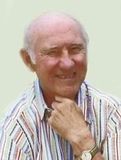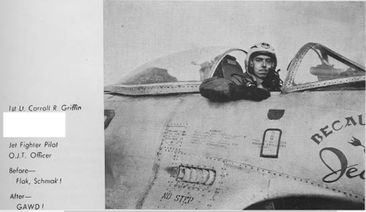Forward Looking Advanced Multimode Radar (FLAMR)
For several years in the early 1970s, the biggest budget item at the Air Force Avionics Laboratory (AFAL) in Dayton OH was the Forward Looking Advanced Multimode Radar (FLAMR).
FLAMR was the first real-time synthetic aperture radar (SAR) and was the first airborne radar to employ an electronically steered antenna (ESA).
The significance of this program was well understood and appreciated by radar engineers at the time, but it hasn't been given its due in the history of radar technology in that era.
Consider this admirable attempt to record the history of Air Force avionics technology [1]:
"In the 1970s the maturation of digital technologies affected the development of SAR-based systems, making possible, among other things, the first real-time processing of SAR images. Capabilities and technical developments that benefited from these and/or other advances and technical refinements included FLAMR, or Forward Looking Advanced Multi-Mode Radar . . . "
That's all that it says about FLAMR. This is understandable, because it was written by historians, not engineers, nearly three decades later. A lot of the principal players were no longer available to provide context and greater detail.
Classification issues may have prevented more details from publication. It takes time and money to declassify old material, and it's always easier to let it remain classified if in any doubt.
1. Introduction
The history of synthetic aperture radar, beginning in the early 1950s, has been well documented in IEEE publications and elsewhere.
Up through the late 1960s SAR systems did not generate real-time images. They recorded amplitude and phase at video frequencies on photographic film, with the film spools driven commensurate with aircraft ground speed. After landing, the film was developed, then placed on an optical bench that effectively formed a two-dimensional Fourier transform, i.e., transformed the amplitude and phase information into range and Doppler. [2] [3]
FLAMR was the first SAR to use a digital signal processor, enabling it to generate images in-flight. [4] [5] [6]
2.0 FLAMR Program
2.1 Program Origins
This section is based largely on discussions in 1976 with Rudolph Plak, the FLAMR program manager at the Air Force Avionics Laboratory at Wright Field in Dayton OH.
In the mid to late 1960s, AFAL sponsored at least two major programs attempting to use SAR to guide an air-to-ground missile. One was the Synthetic Array Radar Command Air Launched Missile (SARCALM) [7] [8], developed by Hughes Aircraft in Culver City CA. Its competitor was Synthetic Aperture Retransmission Guidance (SARG) [9], developed by Raytheon in Bedford MA. Neither program was successful, in part because contemporary technology could not support real-time image formation.
In the late 1960s, Rudolph Plak was trying to start a program to demonstrate an electronically steered array for an aircraft radar antenna. At the same time, Jerry Pasek, a GS-15 at AFAL, was trying to start a program to demonstrate a digital SAR processor. At some point, they combined their efforts into a proposal for a program to do both in one program.
Plak and Pasek went to the Pentagon to pitch the idea to Harry I. Davis, Undersecretary of the Air Force for Research and Development. Davis allegedly said, "I've been waiting for someone to propose this", and approved their proposed advanced development program.
2.2 Air Force Management
FLAMR was an Advanced Development (6.3) program under the Air Force 698DF project.
The AFAL program manager was Rudolph Plak.
The AFAL project engineer was Evan D. Larkin.
2.3 Program Structure
The program had four contractors.
Hughes Aircraft in Culver City CA designed and built the radar, and conducted the test program.
Emerson Electric Co. in St. Louis MO designed and built the electronically steered antenna.
Applied Research Laboratories of the University of Texas (ARL:UT) in Austin TX provided Independent Verification and Validation (IV&V).
North American Rockwell in El Segundo CA flew and maintained the test aircraft.
3.0 FLAMR Systems
3.1 Antenna
The FLAMR antenna was designed and built by Emerson Electric Co. in St. Louis MO. The antenna was a passive array, with 3600 reciprocal latching ferrite phase shifters. [10] [11] [12] [13][14]
3.2 Radar
The radar operated at Ku band (J band), at multiple frequencies between 16 and 16.4 GHz. [15]
Peak power was 100 kW. The pulse repetition frequency (PRF) ranged from 1.7 to 2.3 kHz. [15] This corresponds to unambiguous ranges of 48 to 35 nautical miles.
Images were made with range resolution of 20, 40, or 80 feet, and with 1, 2, or 4 looks (noncoherent integrations for speckle reduction). [15]
Over the last 24 flights out of 72 total, improved resolution of 7.5 feet was available when using the FLAMR Angle Processor (FLAP). [15]
A typical waveform transmitted an approximately 5 microsecond pulse, modulated by a 128-bit Golay code. This uncompressed pulse width, combined with the PRF of approximately 2 kHz, gives a duty cycle of 0.01. Hence the average power was about 1 kW.
In-phase and quadrature (I/Q) video data was digitized to 6 bits using high speed ADCs, and recorded on wideband tape. [15] [16]
There was no automatic gain control (AGC). A flight test engineer monitored signal levels on an A-scope display and adjusted the gain so that saturation occurred at about 3 times the RMS signal level. According to Grey and Zeoli [17], this minimizes digital distortion, the sum of quantization and saturation noise.
3.2.1 Golay Codes
Golay codes are pairs of complementary codes, which have the useful property that their minor correlation peaks ("range sidelobes" to the radar engineer) are equal and opposite everywhere. [18] [19]
The "A" and "B" codes were transmitted pairwise, with the order varied pseudo-randomly to avoid spectral lines. They were used in FLAMR to suppress range sidelobes from strong reflectors.
Flight tests at Edwards AFB CA showed negligible range sidelobes when imaging trihedral corner reflectors of very large radar cross section set on Rosamond Dry Lake.
3.2.2 FLAMR Angle Procesor (FLAP)
FLAP processed three channels -- sum, azimuth difference, and elevation difference. [4]
The FLAP processor estimated the antenna null location in range and Doppler. Potential applications included making Doppler measurements with greater precision for inertial velocity damping and using surveyed ground points for inertial navigation position updates.
The relationship between azimuth null and Doppler was also shown to be useful for moving target detection, and for placement of moving targets in their true position in images.
3.2.3 Power
Peak power was in excess of 200 kW. With a duty cycle of 0.01, the effective radiated power was about 2 kW. [Citation Needed]
3.3 Motion Compensation
Motion compensation was provided by a Litton LTN-51 inertial navigation unit. Radar Doppler measurements were used to damp the inertial velocity.
This was known as the Clutter Error Detection (CED) mode, a scan pattern of six beam positions (-60, 0, and 60 deg azimuth, and 6 and 12 deg depression). [4]
To avoid errors due to non-homogeneous reflectivity in the beam footprint, a least squares estimator was used to find the Doppler along the monopulse null, fitting a straight line to azimuth difference vs. Doppler across several range bins.
If the in-phase and quadrature video in the difference channel for a given axis (azimuth or elevation) is denoted by D, and the sum channel video by S, then the difference to sum ratio for that axis is D.S/S.S. The least squares estimator weights each Doppler filter and range bin by the sum channel power, or S.S. Hence the weighted difference to sum ratio in each cell is D.S.
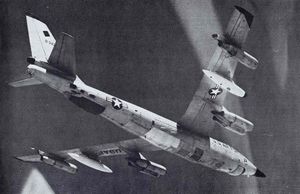
4. FLAMR Flight Tests
The flight test aircraft was an Air Force B-47, serial number 53-4296.
It flew 72 times from August 1972 through March 1976 [15].
The normal crew was 6 people, including two pilots and four flight test engineers.
Most tests were flown over the San Joaquin Valley in central California, where the terrain was relatively flat.
4.1 Instrumentation
Approximately 450 wideband, 30.5 x 2.5 cm (12 x 1 in. ) , 14-track magnetic tapes were recorded during the flight test program [15].
4.2 Harmonization
Harmonization was the name given to a ground test procedure to collect data that allowed determination of the direction cosine matrix between inertial measurement unit (IMU) coordinates and radar antenna coordinates.
Preparation and measurements took the better part of a day, with the B-47 parked on the ramp at the North American Rockwell test facility.
One or more horn antennas were placed on the ramp at surveyed locations with radar absorber material in front to minimize multipath. The FLAMR antenna was used in receive mode for the procedure, and monopulse difference and sum channel data was recorded.
An ARL:UT engineer, Fred Beckner, wrote the detailed test procedure and data reduction guide for the harmonization.
The resulting direction cosine matrix was then stored in the FLAMR processor to aid in antenna pointing during flight test.
4.3 Ground Moving Target Indication (GMTI)
An image from one test flight showed a long bright return parallel to a set of railroad tracks in the San Joaquin Valley. Subsequent investigation showed that a train was operating in the area at the approximate time the image was made, though no further verification was attempted.
That image motivated further testing to assess the GMTI capabilities of FLAMR.
One test at what is now Marine Corps Logistics Base Barstow had a tracked vehicle moving at a fixed speed and direction while it and other vehicles were being mapped by FLAMR. Engineers had noted that any tracked vehicle has its upper track moving at twice the vehicles's velocity while the lower track in contact with the ground is unmoving. In accordance with theory, the reflection from the top of the track was imaged at twice the Doppler frequency as the main return from the vehicle body.
This was briefly marketed by Hughes as a Tracked Vehicle Discriminator (TVD). Less optimistic observers ointed out that the vehicle was moving on a dry lake bed with very low reflectivity, and the displaced top track image was several decibels below the edges of the lake bed.
Another test or series of tests in the San Joaquin Valley imaged a station wagon with a corner reflector on its roof, driven by an ARL:UT engineer.
4.4 Jamming
A jamming test was flown at Pacific Missile Test Center (PMTC) at Naval Air Station Point Mugu in California.
FLAMR images from these tests were puzzling at first, showing vertical stripes of noise interspersed with clear ground images.
Subsequent analysis inferred that multipath reflections of the jammer signal from the ramp combined with the primary jamming signal to form a lobing structure through which the B-47 flew while mapping. Thus it was able to make good ground maps while in the jammer nulls.
4.5 Virtual Range Instrumentation
Most or perhaps all of the FLAMR test flights were flown in California. Some military installations had suitable range instrumentation to provide a ground reference, but no attempts were made to schedule time on these ranges.
As FLAMR evolved, there was interest in demonstrating inflight update of an inertial navigation system and inflight targeting based on SAR images. These tasks required ground truth.
Two ARL:UT engineers, Al Collins and Fred Beckner, devised a method of creating a virtual range and using FLAMR range and Doppler measurements to calibrate it. A set of 10 or 12 corner reflectors were positioned at surveyed sites in farm fields in the San Joaquin Valley. They were arranged in symmetric pairs either side of planned ground track, and about 20 nautical miles apart in the down range direction. A programmed scan was implemented that mapped a set of four reflectors at a time, then dropped the nearest two and added a new pair further down range as the flight progressed.
After the flight each corner reflector would be identified on an image, and its range and Doppler retrieved. The Doppler would be converted to range rate, and a set of six corner reflector images would be used with an assumption of constant jerk over that short interval, so that there were 12 measurements and 12 unknown coefficients (position, velocity, acceleration, and jerk in three dimensions). A program was written to do an direct extrapolation of the polynomial coefficients.
Measurement noise prevented this method from working properly. A longer interval was then used with a least squares solution, which worked better. An optimal estimation approach was also pursued. However, AFAL terminated the test program before much further work could be done on the virtual range.
4.5.1 Corner Reflector Migration
The virtual range work met an obstacle on the first test flight along the corner reflector array. The corner reflectors showed up centered in the first few images, but then progressively moved towards the edges of the images and eventually out of view altogether.
This caused a temporary halt to the flight tests.
An ARL:UT engineer, Gary Crow, plotted the drift of the corner reflectors against time and showed that there was an angular bias somewhere in the system.
Various possible sources of the bias were discussed in an all day meeting. Finally Rudy Plak asked if anyone knew the last time they had performed the harmonization procedure. It turned out to be over three years previously. Rudy Plak then asked what had changed in the system since then. The records showed that the inertial measurement unit (IMU) had been removed and replaced three times, and once they had replaced the four horn monopulse feed to the antenna.
A new harmonization procedure was scheduled. The results showed changes from the stored direction cosine matrix of one or two milliradians in pitch and roll, and 11 milliradians in azimuth. The azimuth figure agreed closely with Gary Crow's plot of the corner reflector migration.
The bias was roughly one third of the 3 dB beamwidth. Thus it didn't cause any significant illumination problems on images made on numerous sorties prior to flying over the corner reflector array, and hence wasn't noticed.
The new direction cosine matrix was inserted into the system, and the programmed scan worked well on the next test flight.
5. Follow-On Activities
Flight test activity was terminated in the spring of 1976. Jerry Pasek and Rudy Plak orchestrated a week long program review for radar engineers from industry, academia, and the military at the Avionics Laboratory. Each organization was limited to three attendees.
The review occurred in approximately June 1976. Copies of briefing slides were used as informal documentation on program results, pending a more formal final report.
At the end of the program, the Avionics Laboratory acquired the flight test instrumentation data from Hughes along with data processing tools The data and tools were used by a newly formed Radar Signal Processing Laboratory (RSPL) within the Avionics Laboratory.
Radant [21] cites an AFAL-TR-77-103, May 1977, as a final report on the program. This is not found using the Defense Technical Information Center (DTIC) search engine, nor is it found using common web search engines. The report, if it exists, may never have been declassified, hence preventing public access.
Radant [21]also provides some context for the work that preceded and followed FLAMR, and for its place in the evolution of SAR.
Flight test data was used by the RSPL and by multiple radar manufacturers in performing trade studies and human factors studies over the next several years.
6. People
A number of the principals in FLAMR served in World War Two, and that service must have provided both insight and motivation for developing technology with great military utility.
6.1 Air Force Avionics Laboratory
6.1.1 Rudolph Plak
Air Force program manager for FLAMR
Born: 4 Nov 1920, Dayton OH
Died: 10 Feb 1993, San Diego CA
Enlisted in Army Air Corps on 2 April 1942 [22]. Flew as a radio operator on C-46s in the China-Burma-India (CBI) theater.
6.1.2 Jerry Pasek
Co-originator of FLAMR program with Rudy Plak
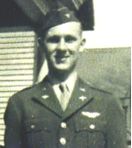
Born: 28 July 1924, Putnam TN
Died: 11 August 2012, Evansville IN [23]
Enlisted in Army Air Corps on 5 June 1943 in Evansville IN [24]
On 29 November 1944 2LT Jerry Pasek was the navigator on B-17G 42-31614, "Minnie the Mermaid", when it received battle damage while attacking the oil refinery at Misburg, Germany, and made a forced landing 20 miles east of Eindhoven, the Netherlands. [25]
6.1.3 Evan Daniel Larkin
FLAMR Project Engineer
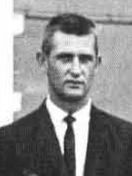
Born: 24 Dec 1923, Pittsburgh PA
Died: 8 Dec 2015, Dayton OH [27]
Enlisted in the Army on 13 May 1943 in Toledo OH [28]
6.1.4 Thomas Lynn Grettenberg
Consultant to AFAL
Born: 17 Apr 1934 in Los Angeles CA
Died: 5 May 2008 in Tustin CA [29]
Ph.D. from Stanford, 1962. [30]
6.2 Hughes Aircraft Company
6.2.1 Charles Vance Smith
Born: 3 Feb 1934
Original FLAMR program manager.
Active duty Air Force officer at Wright-Patterson AFB OH, 1957-1960.
6.2.2 James Orval Mutton
Replaced Charles V. Smith as program manager at Hughes.
6.2.3 Jack Oliver Pearson
6.2.4 Thomas Francis Stipulkosky Jr.
Worked on FLAMR initially at ARL:UT, joined the Air Force and continued FLAMR work at AFAL, then worked on FLAMR at Hughes after separation from the Air Force
6.2.5 Philip George Grieve
6.2.6 Hughes Doctoral Fellows
The following engineers were Hughes Doctoral Fellows, nominally working half time and pursuing a Ph.D. in the remaining time. Dissertations were generally related to the work done on FLAMR. After completing their Ph.D., they transitioned to full time work at Hughes.
Jack Oliver Pearson
Suboptimal estimation in the presence of uncertainties using sensitivity relationships
Ph.D. dissertation, UCLA, 1971[31]
James Orval Mutton
A coupled transmission-line model for a stripline containing transversely magnetized ferrite
Ph.D. dissertation, UCLA, 1972[32]
Philip George Grieve,
A unified approach to the construction of Constant False Alarm Probability radar detectors
Ph.D. dissertation, UCLA, 1975[33]
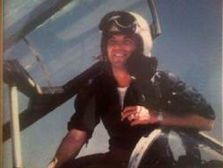
6.3 North American Rockwell
6.3.1 William Henry Wescott
Chief Test Pilot on B-47 for North American Aviation
Born: 1 Sep 1922 in Wisconsin
Died: 25 Feb 2016 in Mesa AZ [34]
Enlisted in the Army on 23 January 1942 in Milwaukee WI. [35]
On April 26, 1952, Major William H. Wescott destroyed his fifth MiG in four weeks to become the Korean War's 12th ace. [36]
6.4 ARL:UT
6.4.1 Francis Allen Collins
Lead engineer for FLAMR IV&V
Developed virtual range instrumentation methods (Sec. 4.5)
Born 24 Jul 1931 in Illinois
Died 2 Dec 2009 in Travis, Texas [37]
6.4.2 Frederick L. Beckner
IV&V analyst.
Born: 1 Jun 1936
Developed harmonization procedure (Sec. 4.1)
Developed virtual range instrumentation methods (Sec. 4.5)
6.4.3 Carroll R. Griffin Jr.
IV&V Analyst
Born: 21 Jan 1928
Died: 10 Jul 2003 in San Vito de Java, Costa Rica [40][41]
U.S. Naval Academy, Class of 1950
Flew over 100 missions in an F-80 in the Korean War [38]
Finished military career as Lieutenant Colonel in US Air Force, chief of Radar Target Scatter Division (RATSCAT) at Holloman AFB NM [38]
6.4.4 William Allen Rasco
IV&V Analyst
Born: Jan. 1, 1924 in Cameron TX
Died: Apr. 12, 1983 in Arlington VA [42]
Able Seaman in the US Navy in WWII [43]
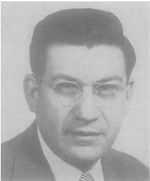
6.4.5 Gary Lynn Crow
IV&V Analyst and Field Engineer
Born: Sep. 7, 1941 in Bee TX
Died: Aug. 30, 1979 in Manchaca TX [45]
6.4.6 Clanin Zack Crow
6.5 Air Force
6.5.1 Harry I. Davis
Deputy Undersecretary of the Air Force for Research and Development
Born: 3 Dec 1909, Brooklyn NY
Died: 18 Aug 1988, Fairfax VA [46]
6.6 Emerson Electric Company
- ↑ "Breakthrough" Technologies Developed by the Air Force Research Laboratory and Its Predecessors, Air Force Research Laboratory History Program, December 21, 2005, http://www.dtic.mil/docs/citations/ADA528970
- ↑ Lucero, Antonio B ; Swerling, Peter ; Breiman, Leo, Synthetic Aperture Radar Signals: Formulations and Approaches for Data Analysis, May 1975, http://www.dtic.mil/docs/citations/ADA021181
- ↑ Robert L. Butterworth, QUILL: The First Imaging Radar Satellite, NRO, December 2002, http://www.nro.gov/foia/declass/QUILL/30.%20QUILL-The%20First%20Imaging%20Radar%20Satellite.pdf
- ↑ 4.0 4.1 4.2 Roy Pietsch and William A. Rasco, "Synthetic Aperture Radar Data Variance Analysis," AFWAL-TR-80-1058, February 1980, http://www.dtic.mil/docs/citations/ADA112931
- ↑ Frederick L. Beckner et al, "Synthetic Aperture Radar (SAR) data processing," Chapter 5, Active Microwave Users Working Group, SAR Data Processing Panel, Proceedings of a Workshop held at Lyndon B. Johnson Space Center, Houston, Texas, August 1976, NASA-CP-2030, http://ntrs.nasa.gov/search.jsp?R=19780013624 http://ntrs.nasa.gov/search.jsp?R=19780013619
- ↑ Samuel W. McCandless Jr. and Christopher R. Jackson, "Chapter 1. Principles of Synthetic Aperture Radar", Synthetic Aperture Radar Marine User's Manual, http://www.sarusersmanual.com/ManualPDF/NOAASARManual_CH01_pg001-024.pdf
- ↑ Eddy Hose, "Synthetic array radar command air launched missile system", US Patent No. 4204210, Filed 15 Sep 1972, Awarded 20 May 1980, http://www.freepatentsonline.com/4204210.pdf
- ↑ Eddy Hose, "Delay Line Null Command Generator Test Set for SARCALM", US Patent No. 4860015, Filed 29 Aug 1972, Awarded 22 Aug 1989, http://www.freepatentsonline.com/4860015.pdf
- ↑ Henry D. Zuerndorfer, Hans A. Maurer, and Donald S. Banks, "Radar Mapping Technique", US Patent No. 4163231, filed 3 Jan 1968, issued 31 Jul 1979, http://www.freepatentsonline.com/4163231.pdf
- ↑ O. B. Mitchell, G. Lindauer, and George Gould, RARF (Radome, Antenna, and RF Circuitry) Retest and Reliability Evaluation, 1 Oct 1978, http://www.dtic.mil/docs/citations/ADB035349
- ↑ Charles R. Boyd Jr., "Accuracy Study For A Moderate Production Quantity Of Reciprocal Ferrite Phase Shifters," 1979 IEEE MTT-S International Microwave Symposium, Orlando, FL, April-May 1979, http://magsmx.com/links/EAR_PS_Accuracy.pdf
- ↑ W. E. Hord, C. R. Boyd, Jr., and F. J. Rosenbaum, 'Application of Reciprocal Latching Ferrite Phase Shifters to Lightweight Electronic Scanned Phased Arrays', Proc. IEEE, Vol. 56, pp. 1931-1939, November, 1968, http://ieeexplore.ieee.org/document/1448698/
- ↑ G. A. Lindauer, 'Reliability Evaluation of the RARF Ferrite Phase Shifter', 1978 IEEE MTT-S International Microwave Symposium Digest, pp. 100-102, 27-29 June 1978, http://ieeexplore.ieee.org/document/1123800/
- ↑ Philip J. Klass, "Phased-Array Radar Set for Flight Test", Aviation Week & Space Technology, April 15, 1968, pp. 103-106 https://archive.org/details/Aviation_Week_1968-04-15
- ↑ 15.0 15.1 15.2 15.3 15.4 15.5 15.6 William A. Rasco Sr. and Roy Pietsch, "Feature discrimination/identification based upon SAR return variations," Proceedings of the 1978 Synthetic Aperture Radar Technology Conference, New Mexico State University, Las Cruces NM, 8-10 March 1978, http://ntrs.nasa.gov/search.jsp?R=19780022511 https://ntrs.nasa.gov/search.jsp?R=19780022508
- ↑ ] "500 MHz Analog-to-Digital Converter Development Program", Mar 1972, http://www.dtic.mil/docs/citations/ADA041498
- ↑ Glenn Gray and Gene Zioli, "Quantization and Saturation Noise Due to Analog-to-Digital Conversion," IEEE Transactions on Aerospace and Electronic Systems, Vol. 7, No. 1, January 1971 http://ieeexplore.ieee.org/document/4103682/
- ↑ Marcel J. E. Golay, "Complementary series," IRE Transactions on Information Theory, Volume 7, Issue 2, April 1961, pp. 82-87, http://dx.doi.org/10.1109/TIT.1961.1057620
- ↑ M.J.E. Golay, “Multislit spectroscopy,” Journal of the Optical Society of America, Vol. 39, Issue 6, 1949, pp. 437-444, https://doi.org/10.1364/JOSA.39.000437
- ↑ http://web.archive.org/web/20160313220127/http://www.millionmonkeytheater.com/b47pics/53-4296.jpg
- ↑ 21.0 21.1 Milton E. Radant, "The Evolution of Digital Signal Processing for Airborne Radar," IEEE Transactions on Aerospace and Electronic Systems, Vol. 38, No. 2, April 2002 http://ieeexplore.ieee.org/document/1009002/ http://documents.tips/documents/the-evolution-of-digital-signal-processing-for-airborne-radar.html
- ↑ Rudolph Plak, Army Air Corps enlistment record, https://www.familysearch.org/ark:/61903/1:1:K8GS-77H
- ↑ 23.0 23.1 23.2 Memorial for Jerry Pasek, with WWII photo and more recent photos, https://www.findagrave.com/memorial/112844848
- ↑ Jerry Pasek, Army enlistment record, https://www.familysearch.org/ark:/61903/1:1:K8PQ-HC3
- ↑ Battle damage report and crew list for B-17G 42-31614 on 29 November 1944 (in Dutch), http://www.wandelpaden.com/hertogenpad11.html
- ↑ The Big T, Cal Tech Yearbook, 1964 https://caltechcampuspubs.library.caltech.edu/2284/
- ↑ Obituary for Evan Daniel Larkin, http://www.tributes.com/obituary/show/Evan-Daniel-Larkin-103088720
- ↑ Evan Daniel Larkin, Army enlistment record, https://www.familysearch.org/ark:/61903/1:1:K8PM-H7B
- ↑ Thomas Lynn Grettenberg obituary https://obits.ocregister.com/obituaries/orangecounty/obituary.aspx?n=thomas-lynn-grettenberg&pid=109368000
- ↑ "A criterion for the statistical comparison of communication systems with applications to optimum signal selection", Ph.D. Dissertation, Stanford University, 1962 https://searchworks.stanford.edu/view/2044436
- ↑ Jack Oliver Pearson Suboptimal estimation in the presence of uncertainties using sensitivity relationships. Ph.D. dissertation, UCLA, 1971 https://catalog.library.ucla.edu/vwebv/holdingsInfo?bibId=2730714
- ↑ James Orval Mutton A coupled transmission-line model for a stripline containing transversely magnetized ferrite Ph.D. dissertation, UCLA, 1972 https://catalog.library.ucla.edu/vwebv/holdingsInfo?bibId=2503753
- ↑ Philip George Grieve, A unified approach to the construction of Constant False Alarm Probability radar detectors Ph.D. dissertation, UCLA, 1975 https://catalog.library.ucla.edu/vwebv/holdingsInfo?bibId=1546445
- ↑ 34.0 34.1 Obituary for William Henry Wescott, http://www.sonoranskiesmortuaryaz.com/sitemaker/sites/Sonora1/memsol.cgi?user_id=1769690
- ↑ William Henry Wescott, enlistment record, https://www.familysearch.org/ark:/61903/1:1:KMX5-8Z8
- ↑ Air War Korea, 1950-53, Air Force Magazine, October 2000, http://www.airforcemag.com/MagazineArchive/Pages/2000/October%202000/1000korea.aspx
- ↑ Francis Allen Collins, Social Security Died Index, https://familysearch.org/ark:/61903/1:1:JGT3-3Z9
- ↑ 38.0 38.1 38.2 Vietnam veterans site at Texas Tech with brief biography of Carroll R. Griffin, https://vva.vietnam.ttu.edu/repositories/2/resources/1383
- ↑ 80th Fighter Squadron, Headhunters, Korea, Section B: https://www.vietnam.ttu.edu/reports/images.php?img=/images/1772/17720108001b.pdf
- ↑ Spanish language news story about July 2013 airplane accident in Costa Rica, on which Carroll R. Griffin Jr. was a passenger, https://www.myplainview.com/news/article/Confirman-anomal-as-tras-accidente-a-reo-en-9093536.php
- ↑ Accident report https://aviation-safety.net/wikibase/wiki.php?id=45158
- ↑ Commonwealth of Virginia Certificate of Death for William A. Rasco, https://www.familysearch.org/ark:/61903/3:1:3Q9M-C95D-X9R6
- ↑ Memorial for William Allen Rasco, https://www.findagrave.com/memorial/27929745
- ↑ Dr. Harry I. Davis, IRE Transactions on Military Electronics ( Volume: MIL-2, Issue: 1, Dec. 1958 ) , https://ieeexplore.ieee.org/document/6870542/
- ↑ Gary Lynn Crow, https://billiongraves.com/grave/Gary-Lynn-Crow/11567815
- ↑ Washington Post obituary for Harry I. Davis, https://www.washingtonpost.com/archive/local/1988/08/20/harry-davis-78-retired-air-force-official/dfaab57e-d47b-4acb-8e11-16502b914eb8/
